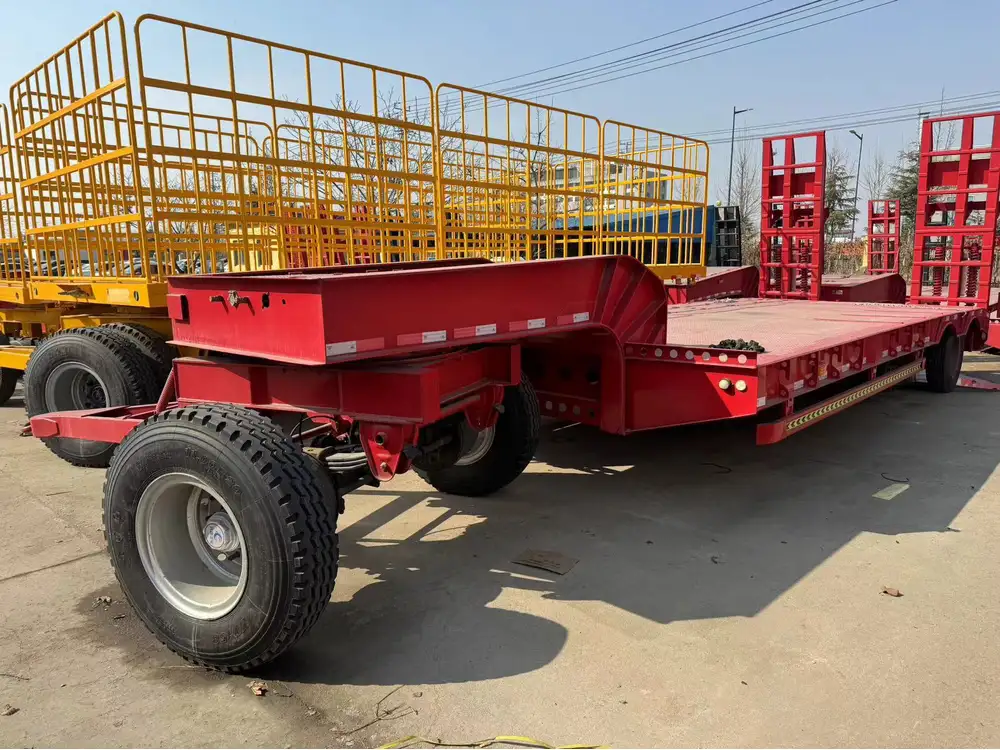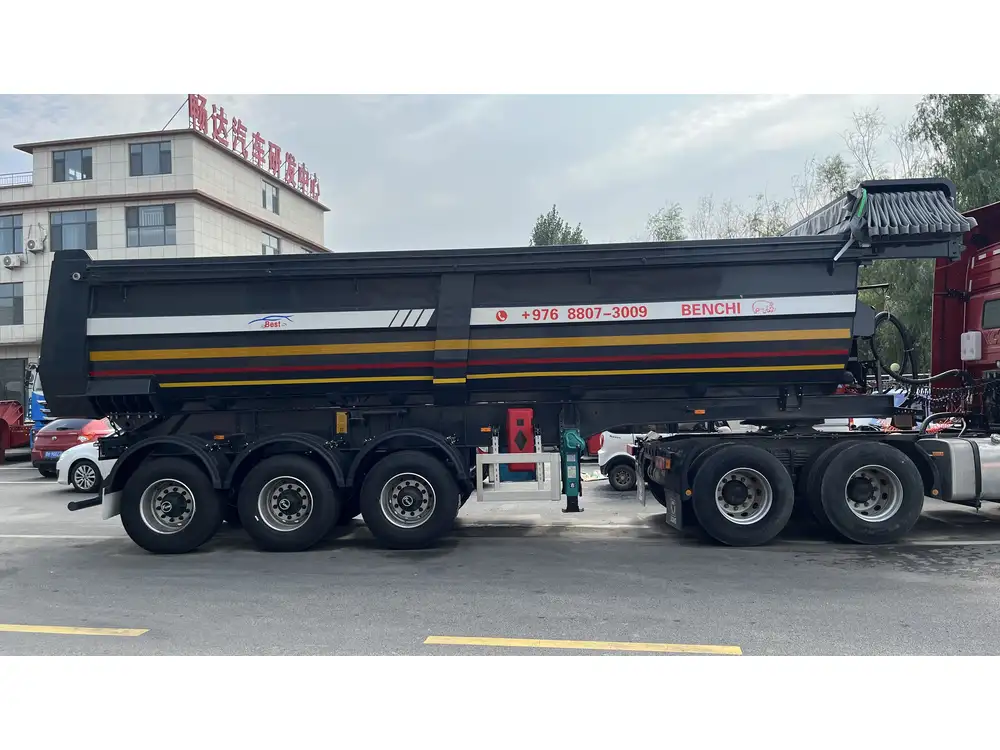When it comes to the transportation of goods across extensive distances, one cannot overlook the indispensable role that flatbed trailers, particularly the 53-foot models, play in the logistics industry. Understanding the weight of an empty 53-foot flatbed trailer is crucial for industry stakeholders, whether you’re a fleet manager, a logistics coordinator, or an independent trucker. This article delves into the various factors that constitute the weight of these trailers, industry standards, material types, regulatory considerations, and much more, providing a comprehensive insight tailored for optimization and practical application.
Table of Contents
- Understanding Flatbed Trailers
- Weight Specifications of a 53-Foot Flatbed Trailer
- 2.1. Standard Empty Weight
- 2.2. Variations in Weights
- Factors Affecting Trailer Weight
- 3.1. Material Composition
- 3.2. Design and Structural Elements
- 3.3. Custom Features and Additions
- Regulatory Considerations
- 4.1. Federal and State Weight Regulations
- 4.2. Importance of Compliance
- Why Knowing the Weight Matters
- Conclusion
1. Understanding Flatbed Trailers
Flatbed trailers, known for their versatility and adaptability, feature an open design with no sides or roof, allowing for easy and efficient loading and unloading from all sides. The 53-foot flatbed trailer is one of the most popular configurations in North America, primarily due to the size which strikes a balance between capacity and maneuverability.

Characteristics of Flatbed Trailers
- Loading Flexibility: Ideal for transporting oversized machinery, lumber, and other irregularly shaped cargo.
- Durable Construction: Robust frames constructed from high-strength materials to withstand various loads.
- Compatibility: Easily adaptable to various loading equipment, including forklifts and cranes.
2. Weight Specifications of a 53-Foot Flatbed Trailer
2.1. Standard Empty Weight
Typically, the empty weight of a 53-foot flatbed trailer ranges from 10,000 to 12,500 pounds (4,536 to 5,670 kilograms). However, an average model often weighs around 11,000 pounds (4,990 kilograms). This weight, while crucial for transport logistics, serves multiple purposes:
- Load Calculations: Helps in determining permissible load capacities.
- Fuel Efficiency: Contributes to understanding fuel consumption in relation to the total gross vehicle weight.

2.2. Variations in Weights
The actual weight can vary significantly based on numerous factors, including:
| Trailer Model | Empty Weight (lbs) | Material Type | Features |
|---|---|---|---|
| Standard Flatbed | 10,000 – 12,500 | Steel | Basic design |
| Lightweight Model | 8,500 – 10,000 | Aluminum | Enhanced features |
| Heavy-Duty Model | 12,500 – 14,000 | Composite materials | Reinforced structure |
3. Factors Affecting Trailer Weight
Understanding the nuances behind trailer weight involves diving deeper into several influencing attributes.
3.1. Material Composition
The choice of materials significantly influences the weight and performance characteristics of a 53-foot flatbed trailer:
- Steel: Offers strength and durability but adds considerable weight. Widely used for standard models.
- Aluminum: Light-weight and rust-resistant; however, it may compromise some strength.
- Mixed Materials: Emerging designs utilize composite materials to enhance strength-to-weight ratios.

3.2. Design and Structural Elements
The actual design plays a pivotal role in the trailer’s weight. Features such as:
- I-Beam Frames: Typical for structural integrity, though they weigh more.
- Crossmembers: Additional supports can increase overall weight but improve safety.
- Different Deck Heights: Low-profile designs often add weight due to structural reinforcements.
3.3. Custom Features and Additions
Many trailers come with customized features that can affect empty weight:
- Side Rails: Optional additions that enhance stability but increase weight.
- Winches and Tie-Downs: Useful for securing loads but can add several hundred pounds.
- Specialized Coatings: Protective finishes may also contribute to weight variations.
4. Regulatory Considerations

4.1. Federal and State Weight Regulations
Understanding the regulatory landscape surrounding trailer weights is essential for compliance and operational efficiency.
Federal Regulations: The Federal Highway Administration stipulates weight limits for trailers, with the overall gross vehicle weight limit generally set at 80,000 pounds (36,288 kilograms) in the United States.
State Variations: Different states may impose additional restrictions or requirements, necessitating a thorough examination of local laws.
4.2. Importance of Compliance
Adhering to weight regulations is crucial for several reasons:
- Safety Concerns: Overloaded trailers can lead to dangerous driving conditions.
- Legal Implications: Fines and penalties for non-compliance can have significant financial repercussions.
- Insurance Impact: Insurance claims may be voided if the trailer was overloaded at the time of an incident.
5. Why Knowing the Weight Matters

5.1. Load Calculations
Understanding the empty weight allows owners and operators to make informed decisions on load capacities. By knowing how much the trailer weighs, businesses can maximize payload without exceeding legal limits.
5.2. Fuel Efficiency and Cost
Operating within weight limits can lead to more efficient fuel usage, directly affecting the bottom line. Overloaded vehicles often experience decreased fuel efficiency, leading to higher operational costs.
5.3. Insurance and Liability
Properly loading a trailer in accordance with its weight specifications not only promotes safety but protects against potential liability in the event of an accident.

Conclusion
Determining “how much does an empty 53-foot flatbed trailer weigh” transcends mere numbers; it is foundational knowledge that empowers logistics professionals, enhances operational efficiencies, ensures compliance, and mitigates risks in transportation. Given the myriad of factors influencing weight, from material selection to regulatory frameworks, it is imperative for operators to remain informed and adaptable.
Navigating the complexities surrounding flatbed trailers equips you with the insight needed to optimize your logistics strategies effectively. Make informed decisions, adhere to regulations, and ensure that your operations remain efficient and compliant, ultimately fostering a robust, reliable supply chain that meets the demands of a competitive market.



